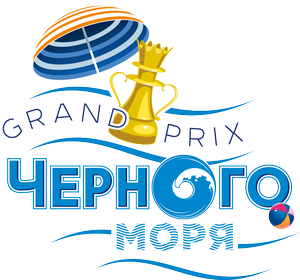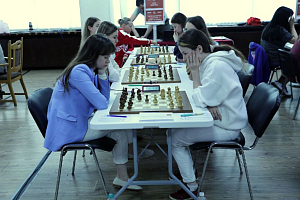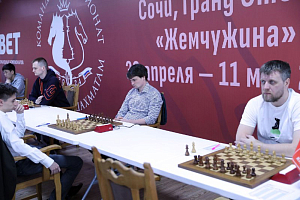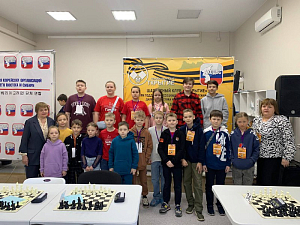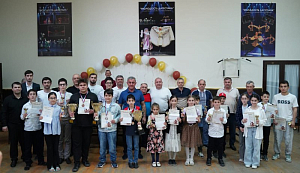Arseniy Nesterov Makes It into Round 2 of FIDE World Cup
Top players are to join the field in Baku on August 2.
Tuesday, August 1 the FIDE World Cup in Baku saw tie-breaker matches. 24 and 9 pairs continued to sort things out in Open and Women's section respectively.
The rules are as follows: after the drawing of lots (it took place for each pair of players immediately after the end of the second classic game), two games are played to the time control of 25 minutes to the end of the game plus a 10-second increment per move, beginning from move one. With no winner revealed, there follows yet another drawing of lots for the next two games featuring 10+10 time control. If no winner revealed at this point, there follows yet another drawing of lots for the next two games featuring 5+3 time control.
This was also the case at the previous 2021 FIDE World Cup in Sochi. And then there is nothing new under the sun: instead of Armageddon they play a 3+2 blitz game (following the drawing of lots, of course). In case of a draw the piece color is reversed and another 3+2 game is played. And so on until the "golden goal", i.e. until the first victory. There can be infinitely many draws from a purely theoretical point of view, but in practice it is extremely unlikely: people are not engines, their fatigue accumulates, and 3+2 control is known for blunders.
The atmosphere in the playing hall changed: more than half the tables were empty (for one day), and the rest had a third chair nearby with an arbiter sitting and writing down all moves on a scoresheet. With many arbiters needed for this job, some employees of the organizing committee got involved in the work – luckily, all of them are qualified chess players and arbiters. It is clear that the boards are electronic and that moves are recorded automatically. Besides, video cameras are there at each board, so that the director of the video broadcast can at the right moment broadcast a "picture" from any board. However, no one has ever abandoned a ballpoint pen and paper – there is no ruling out malfunctions of those electronic devices...
The Russian fans were primarily focused on the match of Russian junior champion Arseniy Nesterov. Facing him was the experienced Argentine grandmaster Fernando Peralta, who had already participated at the World Cup many times and even, if my memory serves me right, was the source of some local upsets. The match did not start smoothly for Arseniy: having got quite a normal position as Black in the Carlsbad structure, he then overdid it and lost.
Game two had the fans on the edge of their seats. After a perfectly handled opening White got a big advantage, but a few inaccurate moves by the young grandmaster lost everything as a result of over excitement....
Nesterov – Peralta
.jpg)
White grabs the d6-pawn after 33...Qb8! 34.Qc5 Rf6, and White was in for a struggle to make a draw following 35. Qxa5 Qxd6 in a situation when he needed a victory only. However, Peralta seems to have counted on forcing a draw with a perpetual check.
33…Qf8 34.Qc5
Now 34…Rf6 is met by 35.Re7, but Black has something else in mind…
34…Rxf3?! 35. Bxf3 Qxf3 36. Re7!
White creates counter threats, hoping to somehow hide from checks in the wide open field.
36…Qg3+ 37. Kf1 Bxg4 38. Qf2 Bh3+ 39. Ke2
.jpg)
39…Bg4+?!
The pawn is not to be touched – 39...Qxd6 40.Qf7+ Kh8 41.Qxg7#, but only a few people on Earth could have leveraged 39...Qc3!!, which ends the game in a perpetual check:
1) 40. Qf7+ Kh7 41. d7 Qc2+ 42. Kf3 Qg2+ 43. Ke3 Qg1+ 44. Kd2 (44.Qf2? fails to 44...d4+ 45. Ke2 Bg4+) 44...Qd4+ 45. Ke1 Qg1+;
2) 40. d7 40...Qb2+ 41. Ke3 Qc3+, and the white king is denied the f4-square over the check from f6.
40. Ke1 Qc3+ 41. Kf1 Bf3
It loses immediately, but the most tenacious defence here can be produced by the engine only: 41...Be6!! 42.Kg1 (42.Rxe6 or 42.d7 runs into 42…Qh3+) 42...Qa1+ 43.Kg2 Qd1!, and White should most likely win this game.
42. Re3 White resigns.
In the 10-minute games Arseniy did not miss his chance when playing as Black.
Peralta – Nesterov
.jpg)
White attempted to regroup his pieces, but made it somewhat slow. Nesterov is exploiting this circumstance to his advantage with a subtle offer to transpose into the endgame.
20…Nh7! 21.Qxe7
Tis offer was best rejected with 21.Qh5, because now the black bishop is rerouted to the central diagonal with a tempo.
21…Bxe7 22. Be2 c5 23. Nf3 Bxf3
It is objectively stronger to throw in 23...Be4 24.R3d2, capturing 24…Bxf3 only at this moment. In this case 25.Bxf3 Bf6 gives White the chance to play 26.d5. Black is better after 26…Bxb2 27.Rxb2 Ng5, but this edge is hardly convertible.
24.Bxf3?
It drops the pawn automatically. You are clearly unwilling to compromise the pawn structure with 24.gxf3, but it would have allowed White to keep his ground owing to a cute tactical trick: 24…Bf6 25.dxc5! Rxd3 26.Bxd3! with a threat of 27.Bxh7+, whereas to take on d3 and let the rook into your own premises is ill-advised either.
24...Bf6 25. Bc6 Rd6 26. Bb5 Bxd4 27. Bxd4 e5 28. f4
.jpg)
28…exd4
Even stronger is 28...e4! 29. Re3 f5, but the game continuation was good enough and Nesterov went on to win the game on move 44. Having drawn the game as White, he went on into the next round.
Eltaj Safarli, who was late for the second game the day before and thus lost it, was there at the table and smiling broadly on the day of the tie-breaker game as early as five minutes to three o'clock. Good mood is the key to success: the grandmaster of Baku took both 25-minute games.
The road to the second round was much more challenging for Ilya Smirin, one of the most experienced participants of the World Cup. Upon losing the first game with classical control, he managed to come back. He struggled to draw both 25-minute games before losing the first 10-minute encounter. He bounced back and then delivered a beautiful checkmate.
Smirin – Avila Pavas
.jpg)
30.Rg6! Black resigns. Feeling inspired, the Israeli grandmaster won the second game as well.
But the victory was the hardest to achieve for the young Azerbaijani grandmaster Aydin Suleymanli – he tipped the scales in his favor only in game 10. Mahir Mamedov, President of the Azerbaijan Chess Federation, who was continuously watching the fight, hugged his compatriot and was the first to congratulate him.
Wednesday, August 2, the heavyweights, led by Magnus Carlsen and world champion Ju Wenjun, join the World Cup. This is who the Russian chess players are pitted against:
Esipenko – Safarli (Azerbaijan)
Nesterov – Giri (Netherlands)
Puranik (India) – Svidler
Adhiban (India) – Dubov
Grischuk – Daneshvar (Iran)
Paravyan – Bluebaum (Germany)
Nepomniachtchi – Asadli (Azerbaijan)
Antipov – Grandelius (Sweden)
Vitiugov – Fridman (Germany).
In the Women's World Cup, the drawing of lots has unfortunately pitted our compatriots Olga Badelka against Leya Garifullina as early as Round 2. Other pairs:
Beydullayeva (Azerbaijan) – Shuvalova
Bivol – Mammadzada (Azerbaijan)
Gomes (Inida) – Lagno
Ordaz Valdes (Cuba) – Goryachkina
Text and photo credit: Vladimir Barsky











